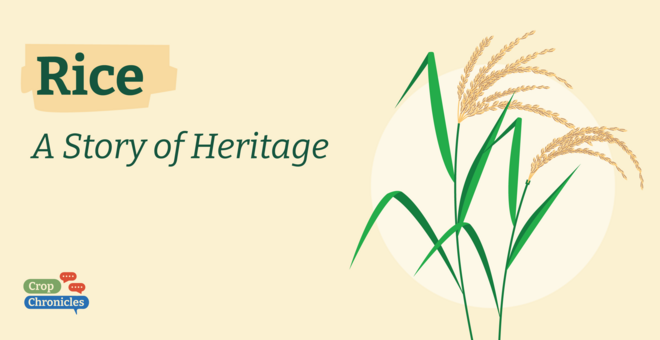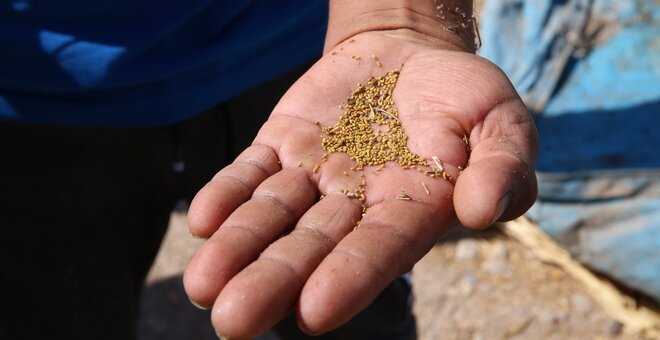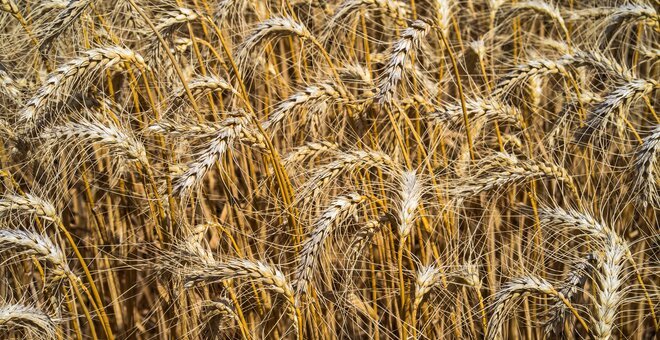Crop Wild Relatives
2011-2021
The Crop Wild Relatives Project (formally titled “Adapting Agriculture to Climate Change: Collecting, Protecting, and Preparing Crop Wild Relatives”) brought together institutions, researchers, plant breeders, farmers and industry to collect, conserve and use the wild relatives of priority crops to help future-proof the world’s food supplies.
Crop wild relatives (CWR) are the cousins of our food crops that still grow in nature. Many have evolved to survive tough conditions, such as dryness, wetness, high temperatures and poor soils. This means they can be a source of new genetic diversity—diversity that plant breeders can tap to develop more-resilient food crops.
But the existence of CWR is being threatened by deforestation, the expansion of cities and agriculture and climate change. If they disappear from the wild, the valuable genes they contain will be lost forever.
The CWR Project addressed this through five components or phases: prioritization, collecting, conservation, pre-breeding and information systems.
Prioritization
The first phase of the project focused on identifying key wild relatives of the 29 crops that the project focused on, how well represented these were in the world’s genebanks and where they might still be found in the wild but had not been collected before. This initial research step helped to identify and prioritize which CWR to collect and where.
Collecting
More than 100 scientists from 25 countries on four continents took part in a 6-year quest to collect the wild plant species that scientists and breeders can use to make our crops more productive in increasingly challenging climates. After spending a total of nearly 3,000 days in the field on exhausting and sometimes even dangerous expeditions, the researchers secured nearly 5,000 seed samples of more than 320 species of CWR—many endangered—of 28 globally important crops.
Conservation
Once crop wild relatives—indeed, any seed samples—have been collected they must be conserved properly in ex situ collections to make sure that they are available to plant breeders and other researchers and to ensure that their genetic diversity does not disappear if they become extinct in the wild. All CWR collected as part of this project are being conserved in several different places: the national collections of the country of origin, the Millennium Seed Bank at Kew, UK, appropriate CGIAR international collections and, ultimately, the Svalbard Global Seed Vault.
Pre-breeding
CWR may have traits that plant breeders are looking for, such as heat or drought tolerance, resistance to pests and diseases and the like, but they tend to be weedy and not well suited to life in the farmer’s field. To help plant breeders get over this hurdle, the project ran pre-breeding projects on 19 crops to isolate the desired genetic traits and introduce them into breeding lines that are more readily crossable with modern, elite varieties. These projects involved 62 national and international partners in 34 countries.
All 19 projects delivered pre-bred lines of their target crops, depositing seeds of more than 14,000 CWR-derived plants in genebanks and making them available through the Multilateral System of the Plant Treaty.
Data about the characteristics of the CWR parents are available through Genesys, while data from the pre-breeding and evaluation projects are available through Germinate databases and other publicly accessible platforms, such as the potato database managed by the International Potato Center in Peru. This makes the material much more accessible to plant breeders, who can use the data in Germinate to identify seeds with the characteristics they are looking for to breed improved varieties. They can then request samples of these materials directly through Genesys.
Information systems
Collections of CWR and pre-breeding material need to be used actively. For this material to be used, the data about it needs to be of the same quality and accessibility as the seeds and other breeding materials themselves. To achieve this, the Crop Wild Relatives Project helped many genebanks to further develop their information systems to help manage and search crop collections globally. The project also supported the development of new, crop-specific databases for previously neglected crops.

Some crops, such as rice, alfalfa, durum wheat and potato, have far exceeded our expectations and new varieties incorporating traits from their wild cousins are already growing in farmers’ fields or will be very soon.

By harnessing the diversity conserved in genebanks, we can work together with farmers, scientists and plant breeders to develop new, more-resilient crop varieties. The Crop Wild Relatives Project is an example of how this approach can succeed.
Components
Crops
The project focused on collecting and conserving the wild relatives of 29 priority crops, selected based on their importance and occurrence on Annex 1 of the International Treaty on Plant Genetic Resources for Food and Agriculture. Those with an asterisk were included in pre-breeding projects.
- Alfalfa*
- Apple
- African rice
- Asian rice*
- Bambara groundnut
- Banana*/plantain
- Barley*
- Bean*
- Carrot*
- Chickpea*
- Cowpea*
- Durum wheat*/bread wheat
- Eggplant*
- Faba bean
- Finger millet*
- Grasspea*
- Lentil*
- Oat
- Pea
- Pearl millet*
- Pigeonpea*
- Potato*
- Rye
- Sorghum*
- Sunflower*
- Sweetpotato*
- Vetch
Partners
- Nearly 170 specialist research institutes and national and international conservation and breeding programs in nearly 70 countries around the world participated in the project.
Supporters
- The Government of Norway
Related news
Alta Sierra Alfalfa Gives High Hopes to Farmers in the Atacama Desert and Beyond
“Alfalfa is what our livelihoods depend on, what our animals eat. It is important for my family now, and it was for former generations – double the value,” says Mauricio Moyo, a smallholder farmer in the Putre region of Chile’s At...
27 Nov 2024
El País: Wild Wheat - The Key to Food Security in a Warming World
Farmers have saved a billion liters of fungicide through disease-resistant wheat varieties, which owe their resilience to genes from wild relatives. However, climate change and evolving pathogens require further research into...
30 Sep 2024




